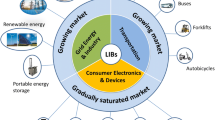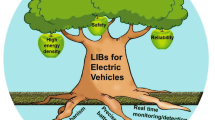Abstract
This paper aims to propose a novel data-driven approach for exploring the partial discharge inception voltage (PDIV) of turn-to-turn insulation in inverter-fed motors. To this end, the gas discharge theory-based finite element method is investigated to simulate the state of turn-to-turn insulation, and a comprehensive database is established concerning the structural and environmental factors. Subsequently, a bisected deep belief network (BDBN), which combines with deep belief networks (DBN) and the bisection method, is proposed to explore PDIV. Specifically, DBN is designed to distinguish the discharge state of turn-to-turn insulation, and the testing applied voltage is adaptively adjusted to explore PDIV by the bisection method. The experiment result demonstrates the effectiveness and reliability of BDBN in exploring PDIV of turn-to-turn insulation in terms of precision.









Similar content being viewed by others
References
Riera-Guasp M, Antonino-Daviu JA, Capolino G (2015) Advances in electrical machine, power electronic, and drive condition monitoring and fault detection: state of the art. IEEE Trans Ind Electron 62(3):1746–1759. https://doi.org/10.1109/TIE.2014.2375853
Stone G, Campbell S, Tetreault S (2000) Inverter-fed drives: which motor stators are at risk? IEEE Ind Appl Mag 6(5):17–22. https://doi.org/10.1109/2943.863631
Billard T, Lebey T, Fresnet F (2014) Partial discharge in electric motor fed by a PWM inverter: off-line and on-line detection. IEEE Trans Dielectr Electr Insul 21(3):1235–1242. https://doi.org/10.1109/TDEI.2014.6832270
Abadie C, Billard T, Lebey T (2019) Partial discharges in motor fed by inverter: from detection to winding configuration. IEEE Trans Ind Appl 55(2):1332–1341. https://doi.org/10.1109/TIA.2018.2874875
Mancinelli P, Stagnitta S, Cavallini A (2017) Qualification of hairpin motors insulation for automotive applications. IEEE Trans Ind Appl 53(3):3110–3118. https://doi.org/10.1109/TIA.2016.2619670
Pan C, Chen G, Tang J, Wu K (2019) Numerical modeling of partial discharges in a solid dielectric-bounded cavity: a review. IEEE Trans Dielectr Electr Insul 26(3):981–1000. https://doi.org/10.1109/TDEI.2019.007945
Wang P, Li P, Akram S, Meng P, Zhu G, Montanari GC (2022) Considering the parameters of pulse width modulation voltage to improve the signal-to-noise ratio of partial discharge tests for inverter-fed motors. IEEE Trans Ind Electron 69(5):4545–4554. https://doi.org/10.1109/TIE.2021.3086433
Benmamas L, Teste P, Odic E, Krebs G, Hamiti T (2019) Contribution to the analysis of PWM inverter parameters influence on the partial discharge inception voltage. IEEE Trans Dielectr Electr Insul 26(1):146–152. https://doi.org/10.1109/TDEI.2018.007787
Wang P, Li P, Li Y, Cavallini A, Zhang Q, Zhang J (2019) Influence of ambient humidity on PDIV and endurance of inverter-fed motor insulation. In: 2019 IEEE electrical insulation conference (EIC), pp 201–204. https://doi.org/10.1109/EIC43217.2019.9046593
Aakre TG, Ildstad E, Hvidsten S (2020) Partial discharge inception voltage of voids enclosed in epoxy/mica versus voltage frequency and temperature. IEEE Trans Dielectr Electr Insul 27(1):214–221. https://doi.org/10.1109/TDEI.2019.008394
Collin P, Malec D, Lefevre Y (2019) About the relevance of using paschen’s criterion for partial discharges inception voltage (PDIV) estimation when designing the electrical insulation system of inverter fed motors. In: 2019 IEEE electrical insulation conference (EIC), pp 513–516. https://doi.org/10.1109/EIC43217.2019.9046558
Parent G, Rossi M, Duchesne S, Dular P (2019) Determination of partial discharge inception voltage and location of partial discharges by means of Paschen’s theory and FEM. IEEE Trans Magn 55(6):1–4. https://doi.org/10.1109/TMAG.2019.2902374
Lusuardi L, Cavallini A, de la Calle MG, Martínez-Tarifa JM, Robles G (2019) Insulation design of low voltage electrical motors fed by PWM inverters. IEEE Electr Insul Mag 35(3):7–15. https://doi.org/10.1109/MEI.2019.8689431
Bousiou EI, Mikropoulos PN, Samaras PK, Zagkanas VN (2020) A computational approach for modeling partial discharge inception in air insulation systems. In: 2020 IEEE international conference on high voltage engineering and applications, pp 1–4. https://doi.org/10.1109/ICHVE49031.2020.9279840
Sili E, Cambronne JP, Naude N, Khazaka R (2013) Polyimide lifetime under partial discharge aging: effects of temperature, pressure and humidity. IEEE Trans Dielectr Electr Insul 20(2):435–442. https://doi.org/10.1109/TDEI.2013.6508745
Zhang G, Zhang X, Rong H, Paul P, Zhu M, Neri F, Ong Y-S (2022) A layered spiking neural system for classification problems. Int J Neural Syst 32(08):2250023. https://doi.org/10.1142/S012906572250023X
Zhang X, Zhang G, Paul P, Zhang J, Wu T, Fan S, Xiong X (2021) Dissolved gas analysis for transformer fault based on learning spiking neural P system with belief AdaBoost. Int J Unconv Comput 16(2–3):239–258
Wang J, Wang X, Ma C, Kou L (2021) A survey on the development status and application prospects of knowledge graph in smart grids. IET Gener Transm Distrib 15(3):383–407. https://doi.org/10.1049/gtd2.12040
Wang J, Zhang X, Zhang F, Wan J, Kou L, Ke W (2022) Review on evolution of intelligent algorithms for transformer condition assessment. Front Energy Res. https://doi.org/10.3389/fenrg.2022.904109
High-voltage test techniques—partial discharge measurements. Standard IEC 60270, International Electrotechnical Commission (2000)
Rotating electrical machines—part 18-41: partial discharge frbibee electrical insulation systems (type I) used in rotating electrical machines fed from voltage converters—qualification and quality control tests. Standard IEC 60034-18-41, International Electrotechnical Commission (2014)
Kuffel J, Kuffel P (2000) High Voltage Engineering-Fundamentals. Elsevier, Oxford. https://doi.org/10.1016/B978-0-7506-3634-6.X5000-X
Dutton J (1975) A survey of electron swarm data. J Phys Chem Ref Data 4(3):577–856. https://doi.org/10.1063/1.555525
Salakhutdinov R, Hinton G (2012) An efficient learning procedure for deep Boltzmann machines. Neural Comput 24(8):1967–2006. https://doi.org/10.1162/NECO_a_00311
Hinton GE (2002) Training products of experts by minimizing contrastive divergence. Neural Comput 14(8):1771–1800. https://doi.org/10.1162/089976602760128018
Josef Stoer RB (2002) Introduction to Numerical Analysis. Springer, New York. https://doi.org/10.1007/978-0-387-21738-3
He K, Zhang X, Ren S, Sun J (2016) Deep residual learning for image recognition. In: 2016 IEEE conference on computer vision and pattern recognition (CVPR), pp 770–778. https://doi.org/10.1109/CVPR.2016.90
Chen CLP, Liu Z (2018) Broad learning system: an effective and efficient incremental learning system without the need for deep architecture. IEEE Trans Neural Netw Learn Syst 29(1):10–24. https://doi.org/10.1109/TNNLS.2017.2716952
Golubovskii YB, Maiorov V, Behnke J, Behnke J (2002) Influence of interaction between charged particles and dielectric surface over a homogeneous barrier discharge in nitrogen. J Phys D Appl Phys 35(8):751. https://doi.org/10.1088/0022-3727/35/8/306
Li M, Li C, Zhan H, Xu J, Wang X (2008) Effect of surface charge trapping on dielectric barrier discharge. Appl Phys Lett 92(3):031503. https://doi.org/10.1063/1.2838340
Acknowledgements
This work was supported by the Scientific Project of Civil Aviation Flight University of China (CAFUC) under Grants 2022005 (J2022-043) and ZHMH2022-006.
Author information
Authors and Affiliations
Contributions
PL took part in conceptualization, methodology, writing—original draft, investigation, validation, writing—review and editing. XZ involved in conceptualization, methodology, software, writing—original draft, validation, writing—review and editing. PW involved in validation, supervision writing—review and editing. JW took part in methodology, validation, writing—review and editing. ZS involved in funding acquisition, supervision, validation, writing—review and editing.
Corresponding author
Ethics declarations
Conflict of interest
The authors declare no competing interests.
Additional information
Publisher's Note
Springer Nature remains neutral with regard to jurisdictional claims in published maps and institutional affiliations.
Rights and permissions
Springer Nature or its licensor (e.g. a society or other partner) holds exclusive rights to this article under a publishing agreement with the author(s) or other rightsholder(s); author self-archiving of the accepted manuscript version of this article is solely governed by the terms of such publishing agreement and applicable law.
About this article
Cite this article
Li, P., Zhang, X., Wang, P. et al. A data-driven approach for exploring partial discharge inception voltage of turn-to-turn insulation in inverter-fed motors. Electr Eng 105, 2861–2870 (2023). https://doi.org/10.1007/s00202-023-01856-w
Received:
Accepted:
Published:
Issue Date:
DOI: https://doi.org/10.1007/s00202-023-01856-w




